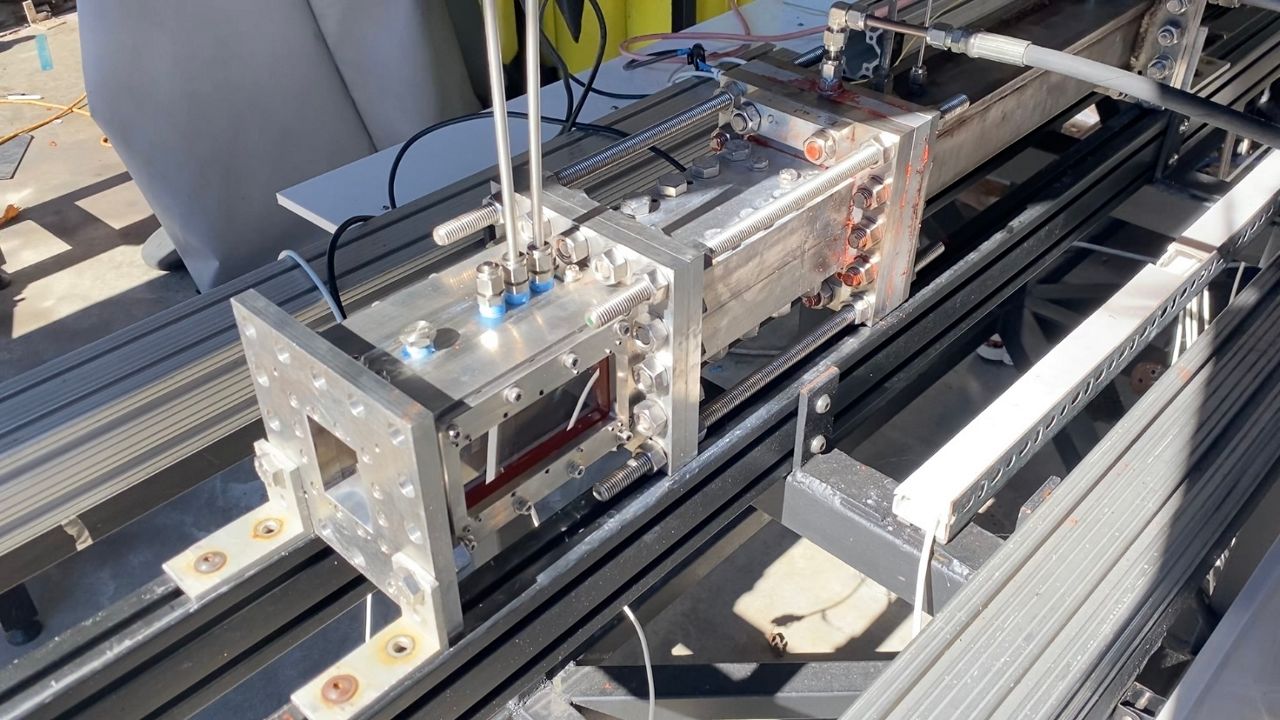As the United States jockeys with rival nations like China and Russia to develop hypersonic propulsion technology, the Department of Defense is leaning on research institutions around the world to lend a hand.
The DoD awarded about $25.5 million over three years to 18 research projects through the University Consortium for Applied Hypersonics (UCAH). The University of Central Florida was among those chosen for the research and received a $1.5 million grant.
Hypersonic means faster than Mach 5 or five times the speed of sound.
Dr. Kareem Ahmed, an associate professor in UCF’s Department of Mechanical engineering and an expert in the field of hypersonic propulsion, said the call for proposals went out about a year ago.
He submitted a white paper and a proposal around September 2020 and then a full proposal in February 2021. The DoD reached out with their offer of the grant in September.
Ahmed and his two research partners, Ph.D. students Daniel Rosato and Mason Thornton, are working to develop “high flammability and high energy-density solid fuels for ramjets and scramjets, both of which ware engines designed for hypersonic propulsion.”
He told Spectrum News 13 that they had started work in this area when before the opportunity to get DoD funding came along.
“We have a few key formulations that we’ve conceptualized in the proposal phase, but now we’re actually fine-tuning to the point where we’re going to start to build and test, at least fast screening some of them and then move on to engine testing,” Ahmed said.
His research also got a $500,000 boost from UCF’s Jump Start fund as a part of the university’s 2021-2022 Strategic Investment Program.
The research is being done inside UCF’s hypersonic high-enthalpy reaction or HyperREACT facility. This area allows them to use a combination of high-speed cameras and high-resolution laser diagnostics to gather data as they run a series of tests.
“The purpose of it is that we can hit high hypersonic conditions for propulsion systems, like simulating flight conditions up to Mach 17,” Ahmed said. “So, you’re ramming the air into the engine as if it’s flying at hypersonic speeds and then you’re exploring things in the optical test section downstream.”
Because of the intensity of the test in addition to the noise, Ahmed and the team wear noise-cancelling headphones and go into a separate room during the tests where they can observe the data coming in as well.
Separately from this recent grant to develop a fuel for hypersonic propulsion, Ahmed and the team published a paper in the Proceeding of the National Academy of Sciences of the USA that proposed a propulsion system that would allow for flight speeds between Mach 6 and Mach 17.
Brought to a commercial market, that could allow for such high-speed travel like getting from New York to Los Angeles in less than 30 minutes.
Published in May 2021, the paper described the system as “an experimental configuration and flow conditions that generate a stabilized oblique detonation, a phenomenon that has the potential to revolutionize high-speed propulsion of the future.”
The research being done for both of these initiatives is critical because of how quickly countries like China and Russia are advancing with this technology.
Earlier in the year, China tested a hypersonic weapon system that U.S. General Mark Milley, the chairman of the Joint Chiefs of Staff, described as “very concerning.” Chinese media outlet, South China Morning Post, also reported back in May that a Chinese physicist was developing a wind tunnel capable of simulating flights at Mach 30.
Russia also announced it successfully test-fired a hypersonic missile in late November.
UCF researchers like Rosado said those are examples of why the U.S. needs investment in work like theirs.
“I won’t say we're playing catch up, but we're not leaving at the moment either, which is why we need the investment in the more research, because if we want to be a leader, we want to not have this disadvantage of being behind in this technology, so we need the money to do the research,” Rosado said.



